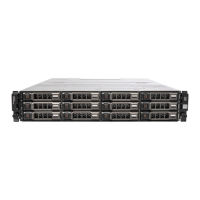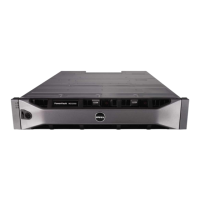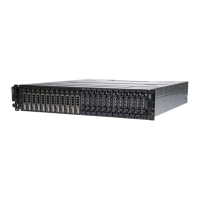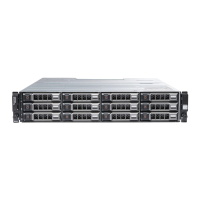Preparing Your Systems for Clustering 43
NOTE: If you elect to use CHAP authentication, you must configure it on both the
storage array (using MD Storage Manager) and the host server (using the iSCSI
initiator) before preparing virtual disks to receive data. If you prepare disks to
receive data before you configure CHAP authentication, you will lose visibility to
the disks after CHAP is configured.
CHAP Definitions
To summarize the differences between target CHAP and mutual CHAP
authentication, see Table 3-3.
Setting up CHAP
The next two steps in your iSCSI configuration, "Configuring CHAP
Authentication on the Storage Array (Optional)" on page 43 and
"Configuring CHAP Authentication on the Host Server (Optional)" on
page 45, offer step-by-step procedures for setting up CHAP on your storage
array and host server.
Configuring CHAP Authentication on the Storage Array (Optional)
If you are configuring target-only CHAP authentication, complete "Configuring
CHAP Authentication on the Storage Array (Optional)" on page 43 and
"Configuring CHAP Authentication on the Host Server (Optional)" on
page 45.
If you are configuring mutual CHAP authentication, complete "Configuring
Mutual CHAP Authentication on the Storage Array" on page 45 and
"Configuring CHAP Authentication on the Host Server (Optional)" on page 45.
If you are not configuring any type of CHAP, skip to "Configuring a Failover
Cluster" on page 63.
Table 3-3. CHAP Types Defined
CHAP Type Description
Target CHAP Sets up accounts that iSCSI initiators use to connect to the
target storage array. The target storage array then authenticates
the iSCSI initiator.
Mutual CHAP Applied in addition to target CHAP. Mutual CHAP sets up an
account that a target storage array uses to connect to an iSCSI
initiator. The iSCSI initiator then authenticates the target.
book.book Page 43 Monday, June 21, 2010 1:45 PM

